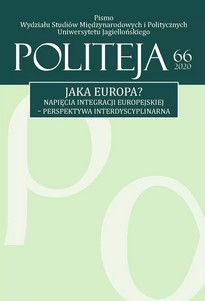The Secular Stagnation Hypothesis and the Future of Europe’s Advanced Economies
The Secular Stagnation Hypothesis and the Future of Europe’s Advanced Economies
Author(s): Artur TomeczekSubject(s): National Economy, Economic policy, Government/Political systems, Comparative politics, Demography and human biology, EU-Approach / EU-Accession / EU-Development, Fiscal Politics / Budgeting
Published by: KSIĘGARNIA AKADEMICKA Sp. z o.o.
Keywords: secular stagnation; natural rate of interest; advanced economies; central banking; zero lower bound;
Summary/Abstract: The secular stagnation hypothesis originated in the late 1930s when Alvin Hansen proposed that the American economy will experience a prolonged depression because of the slowdown in demographics. Widely discussed in the aftermath of the Great Depression, interest in this hypothesis has waned as the world entered a period of rapid economic growth after World War II. In the years following the Great Recession, the secular stagnation hypothesis has once again come to the forefront of economic research when Lawrence Summers introduced the so‑called “new secular stagnation hypothesis.” This article aims to establish whether the secular stagnation hypothesis is relevant to the future of Europe’s advanced economies. Two main symptoms of secular stagnation (demographic slowdown and decline in the natural rate of interest) are especially noticeable in Western Europe. The article has three parts. Part one contains a theoretical overview of the secular stagnation hypothesis. Part two comprises the empirical analysis of the macroeconomic situation in selected advanced economies in Europe and a short review of findings in the literature on the natural rate of interest. Part three identifies possible future problems and provides brief policy recommendations. I conclude that Italy, and to a lesser degree, Spain and Germany, are the countries most vulnerable to secular stagnation.
Journal: Politeja - Pismo Wydziału Studiów Międzynarodowych i Politycznych Uniwersytetu Jagiellońskiego
- Issue Year: 17/2020
- Issue No: 66
- Page Range: 53-66
- Page Count: 14
- Language: English

